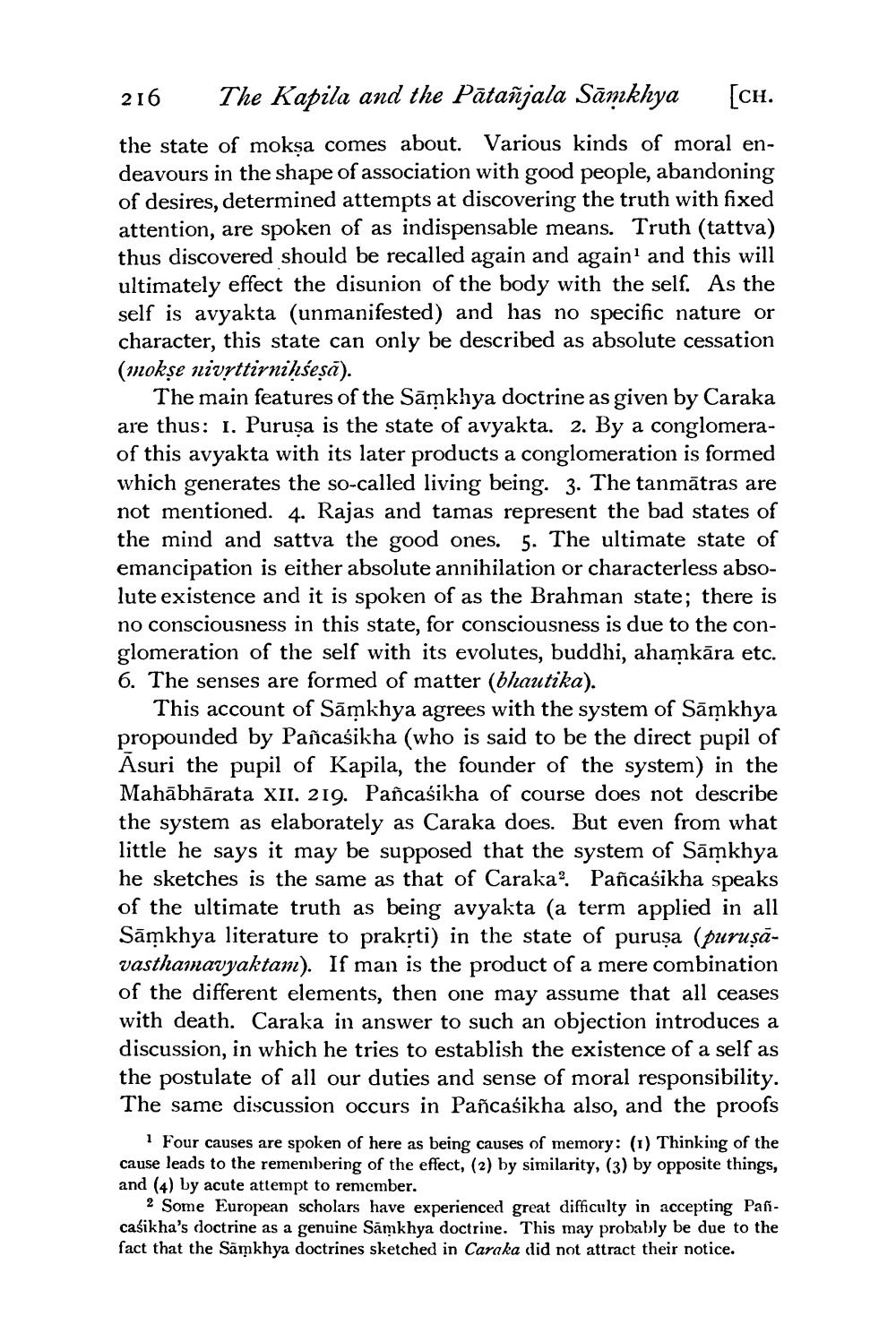________________
216
The Kapila and the Patanjala Samkhya
[CH.
the state of mokṣa comes about. Various kinds of moral endeavours in the shape of association with good people, abandoning of desires, determined attempts at discovering the truth with fixed attention, are spoken of as indispensable means. Truth (tattva) thus discovered should be recalled again and again1 and this will ultimately effect the disunion of the body with the self. As the self is avyakta (unmanifested) and has no specific nature or character, this state can only be described as absolute cessation (mokṣe nivṛttirniḥseṣā).
The main features of the Samkhya doctrine as given by Caraka are thus: 1. Purușa is the state of avyakta. 2. By a conglomeraof this avyakta with its later products a conglomeration is formed which generates the so-called living being. 3. The tanmātras are not mentioned. 4. Rajas and tamas represent the bad states of the mind and sattva the good ones. 5. The ultimate state of emancipation is either absolute annihilation or characterless absolute existence and it is spoken of as the Brahman state; there is no consciousness in this state, for consciousness is due to the conglomeration of the self with its evolutes, buddhi, ahamkāra etc. 6. The senses are formed of matter (bhautika).
This account of Samkhya agrees with the system of Samkhya propounded by Pañcaśikha (who is said to be the direct pupil of Asuri the pupil of Kapila, the founder of the system) in the Mahabharata XII. 219. Pañcaśikha of course does not describe the system as elaborately as Caraka does. But even from what little he says it may be supposed that the system of Samkhya he sketches is the same as that of Caraka. Pañcaśikha speaks of the ultimate truth as being avyakta (a term applied in all Samkhya literature to prakṛti) in the state of purusa (purușăvasthamavyaktam). If man is the product of a mere combination of the different elements, then one may assume that all ceases with death. Caraka in answer to such an objection introduces a discussion, in which he tries to establish the existence of a self as the postulate of all our duties and sense of moral responsibility. The same discussion occurs in Pañcaśikha also, and the proofs
1 Four causes are spoken of here as being causes of memory: (1) Thinking of the cause leads to the remembering of the effect, (2) by similarity, (3) by opposite things, and (4) by acute attempt to remember.
2 Some European scholars have experienced great difficulty in accepting Pañcasikha's doctrine as a genuine Samkhya doctrine. This may probably be due to the fact that the Samkhya doctrines sketched in Caraka did not attract their notice.




